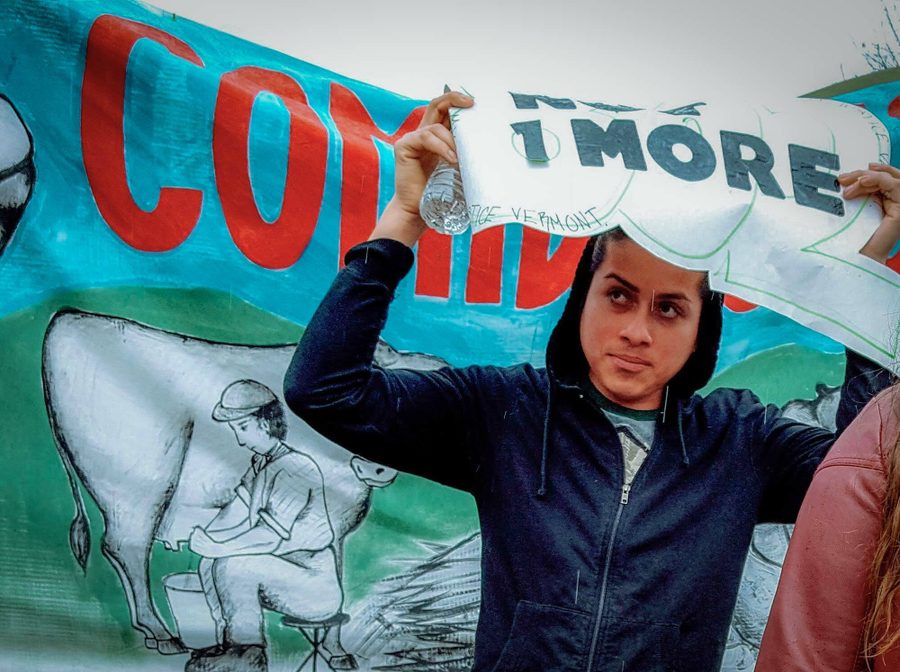Targeted, Imprisoned, Deported, Dead: How ICE’s Detention Can Be Deadly to Migrants
Human rights advocate Durvi Martinez was first detained by Vermont State Police. Then ICE stepped in.
Arvind Dilawar

BURLINGTON, VT. — Durvi Martinez left Mexico after experiencing “intense and violent discrimination” as a transgender woman, says Will Lambek, a staff member with Migrant Justice, a human rights organization for dairy farmworkers. Martinez, then 27, arrived in Vermont in 2015 and worked on a dairy farm, joining Migrant Justice after attending one of its worker assemblies. Soon, Martinez (they/them) was involved in Migrant Justice’s many marches and actions in defense of undocumented immigrants, the backbone of Vermont’s dairy industry.
“One of their first marches with the organization was following the [Immigration and Customs Enforcement] arrest of a Migrant Justice leader named Victor Diaz,” Lambek says. “Durvi participated in and helped to lead that march, and that was ultimately successful in getting Victor released — and he’s still in the country and remains a Migrant Justice leader today.”
Martinez would have a different fate, one that illustrates how ICE perpetuates transphobic violence and the ongoing Covid-19 pandemic in the United States and abroad — and the complicity of local police in doing so.
Martinez became part of Vermont’s indispensable, yet extremely persecuted, undocumented dairy workforce. According to the 2019 book Life on the Other Border: Farmworkers and Food Justice in Vermont, one in seven Vermont dairy workers are Latinx migrants, 90% of whom are thought to be undocumented. Because more than 94% of Vermont residents are white, and a significant number of Vermont dairy farms are within 25 miles of the Canadian border, Latinx farmworkers are highly visible and vulnerable targets for ICE.
Migrant Justice and other immigrants’ rights groups successfully pushed for the passage of the Fair and Impartial Policing policy (FIP) in 2017, to help defend Vermont’s undocumented population. In theory, FIP prevents local law enforcement from working with federal immigration authorities, with exceptions for public and officer safety.
On January 11, Martinez was arrested by Vermont State Police for allegedly driving under the influence. A Vermont State Police officer then alerted U.S. Customs and Border Protection about Martinez, based on “the totality of the circumstances,” says Adam Silverman, public information officer with the state police. Those circumstances, Silverman acknowledges, were simply Martinez’s two previous border-crossing arrests. ICE took custody of Martinez the next day.
Martinez was then held in men’s prisons despite being a trans woman, first by the U.S. Marshals at Northwest State Correctional Facility in Swanton, Vt., then by ICE at Strafford County Corrections in Dover, N.H.
John Curtis, a supervisory deputy with the Marshals, says the policy is not to imprison trans people in facilities that don’t match their gender identity, but “I don’t know the specifics on her, or him, or however she identifies,” regarding Martinez. ICE failed to respond to In These Times’ request for comment but has touted two prison units dedicated to trans women. Most trans prisoners, however, are held with the general population, where harassment, assault and mistreatment have been reported.
According to Migrant Justice, at some point after March 10— the start of Martinez’s ICE imprisonment — Martinez requested a “credible fear screening,” the first step in the process of seeking asylum from transphobic violence in Mexico. But before Martinez could secure an immigration attorney, ICE was moving ahead with deportation. Lambek thinks the speed of Martinez’s deportation could be linked to the pandemic. During that time, ICE was under pressure to reduce the number of people it imprisoned because social distancing is impossible in prisons. Rather than release people to sponsors, ICE chose to rush deportations. At most, ICE gave Martinez 10 days to pursue asylum. They were deported March 20.
That fear of Covid-19 was ultimately realized: On July 1, Martinez died of the coronavirus in Mexico. According to Lambek, Martinez was first denied care at a public facility before their family was forced to seek treatment at a private hospital.
As may have been the case with Martinez, critics warn that deportations are exporting the virus to other countries. The United States deported more than 100 people with Covid-19 to Guatemala, for example, between mid-March and mid-April. The U.S. Marshals Service says it wasn’t aware of any reported cases of Covid-19 at Northwest State Correctional Facility, but the Vermont Department of Corrections reports 45 positive tests at the prison as of August 31. An administrator at ICE’s Strafford County facility reports two positive cases as of August 12.
Whether Martinez contracted Covid while imprisoned in the United States, on the forced journey to Mexico, or while in Mexico, Migrant Justice believes the possibility that Martinez contracted Covid outside the United States does not absolve ICE nor the Vermont State Police.
“Migrant Justice holds ICE responsible for Durvi’s death, even if they didn’t contract Covid in detention,” Lambek says. “Both the conditions of detention and their deportation certainly led to their contraction of the disease and, ultimately, their death. And to the extent that Vermont State Police were proactively involved in alerting ICE to Durvi’s arrest and transferring Durvi to ICE’s custody, in violation of their own policy — that culpability extends to the state police as well.”

I hope you found this article important. Before you leave, I want to ask you to consider supporting our work with a donation. In These Times needs readers like you to help sustain our mission. We don’t depend on—or want—corporate advertising or deep-pocketed billionaires to fund our journalism. We’re supported by you, the reader, so we can focus on covering the issues that matter most to the progressive movement without fear or compromise.
Our work isn’t hidden behind a paywall because of people like you who support our journalism. We want to keep it that way. If you value the work we do and the movements we cover, please consider donating to In These Times.
Arvind Dilawar is an independent journalist whose work has appeared in Newsweek and Vice.







